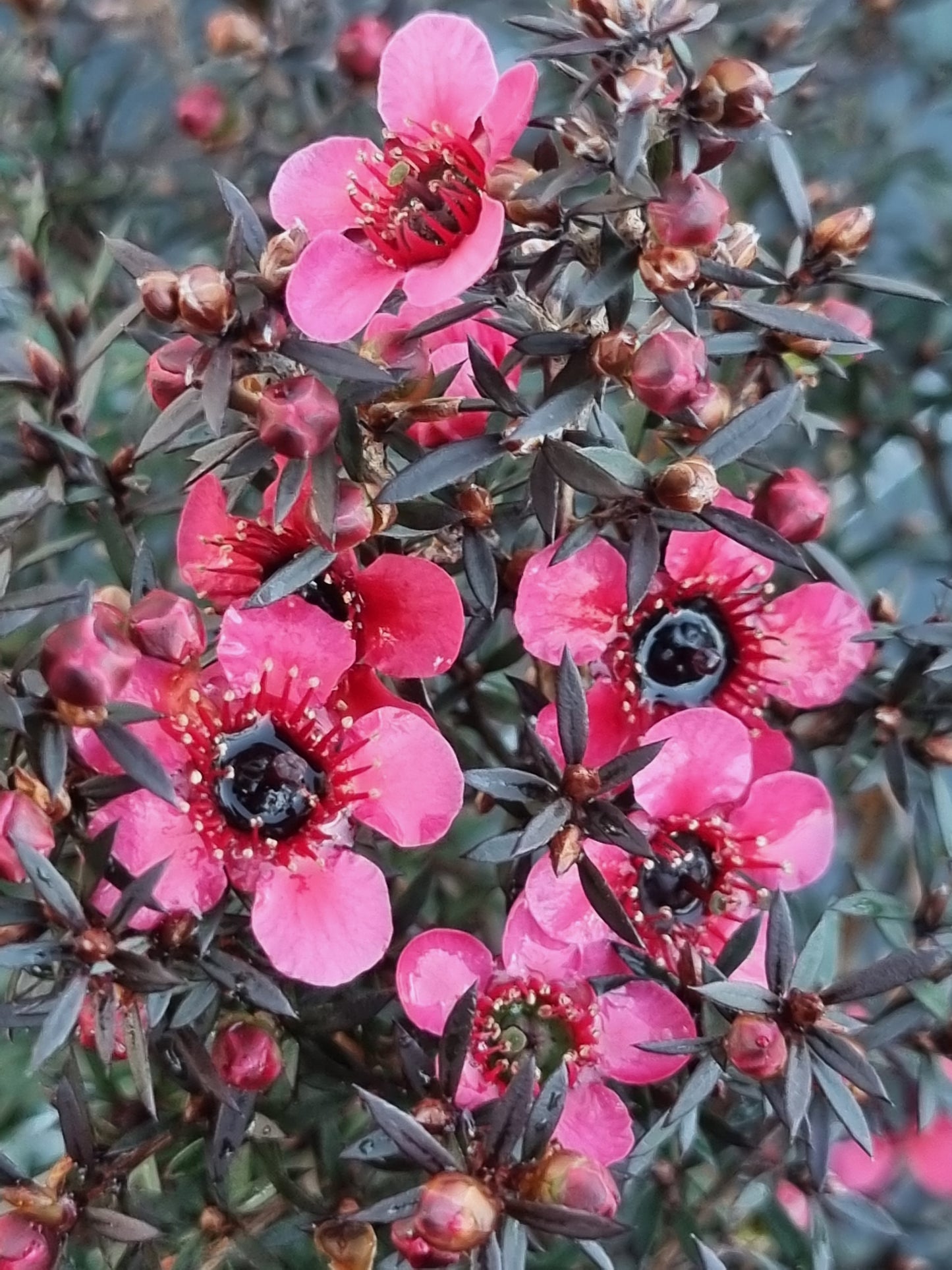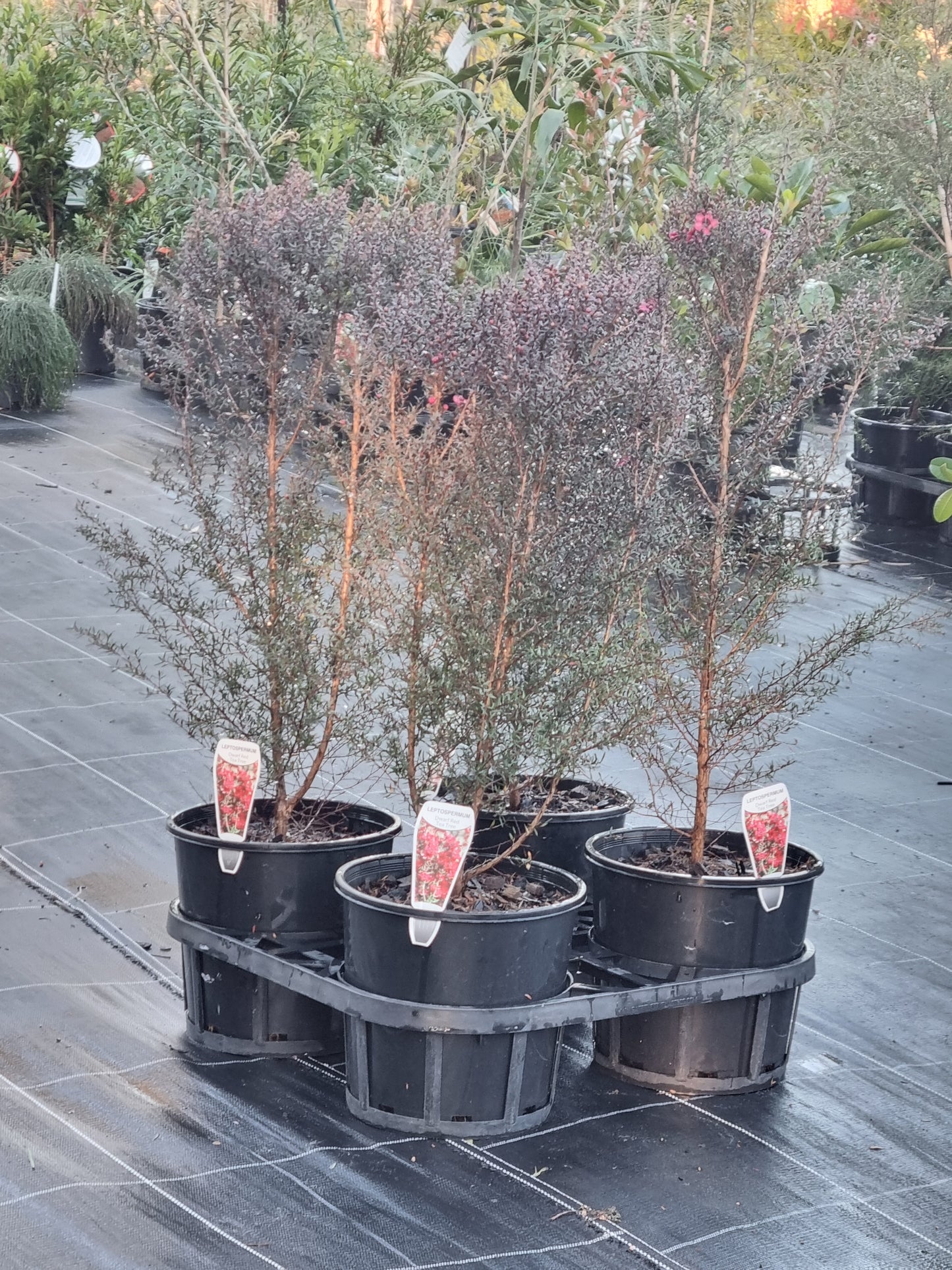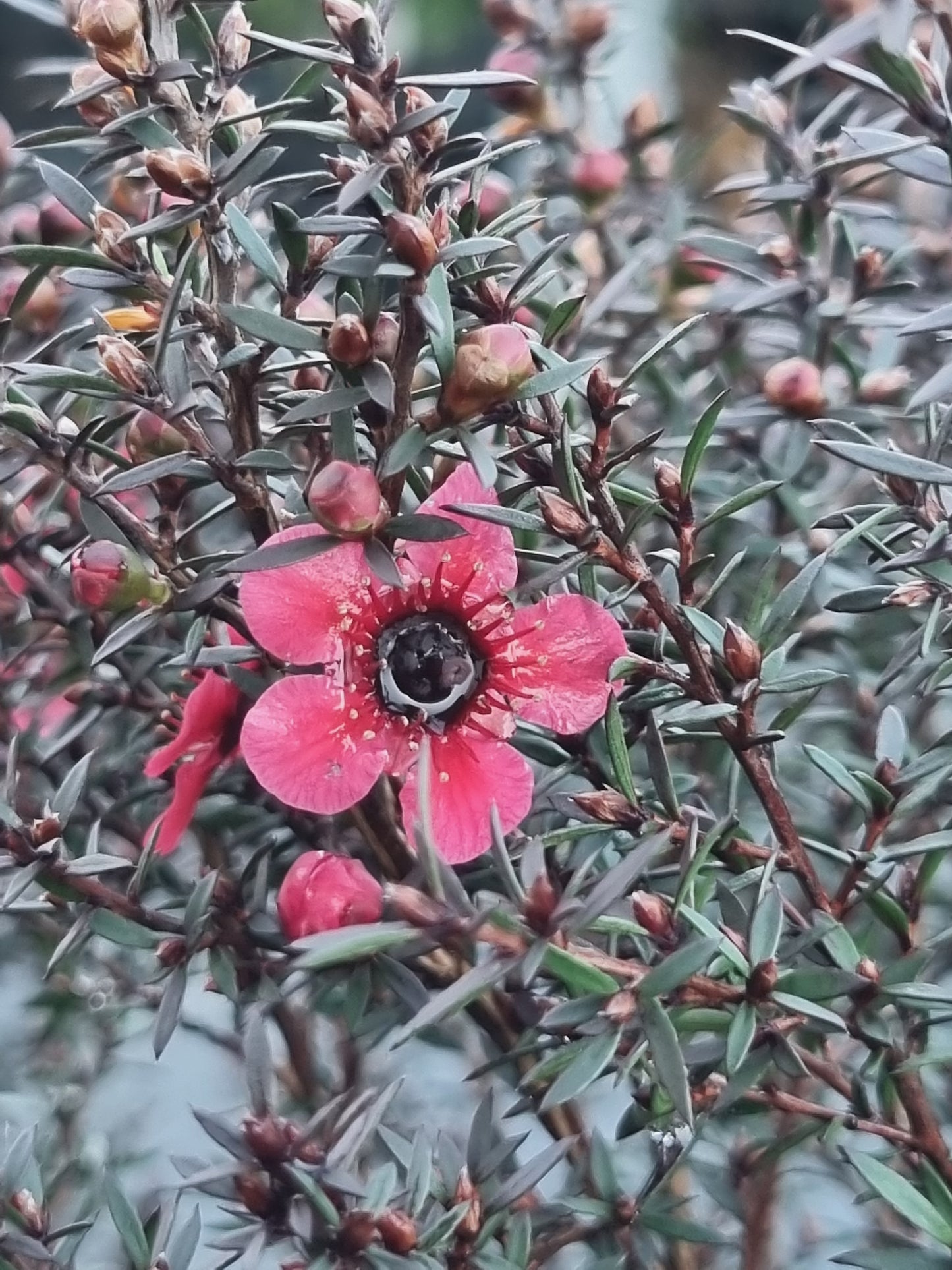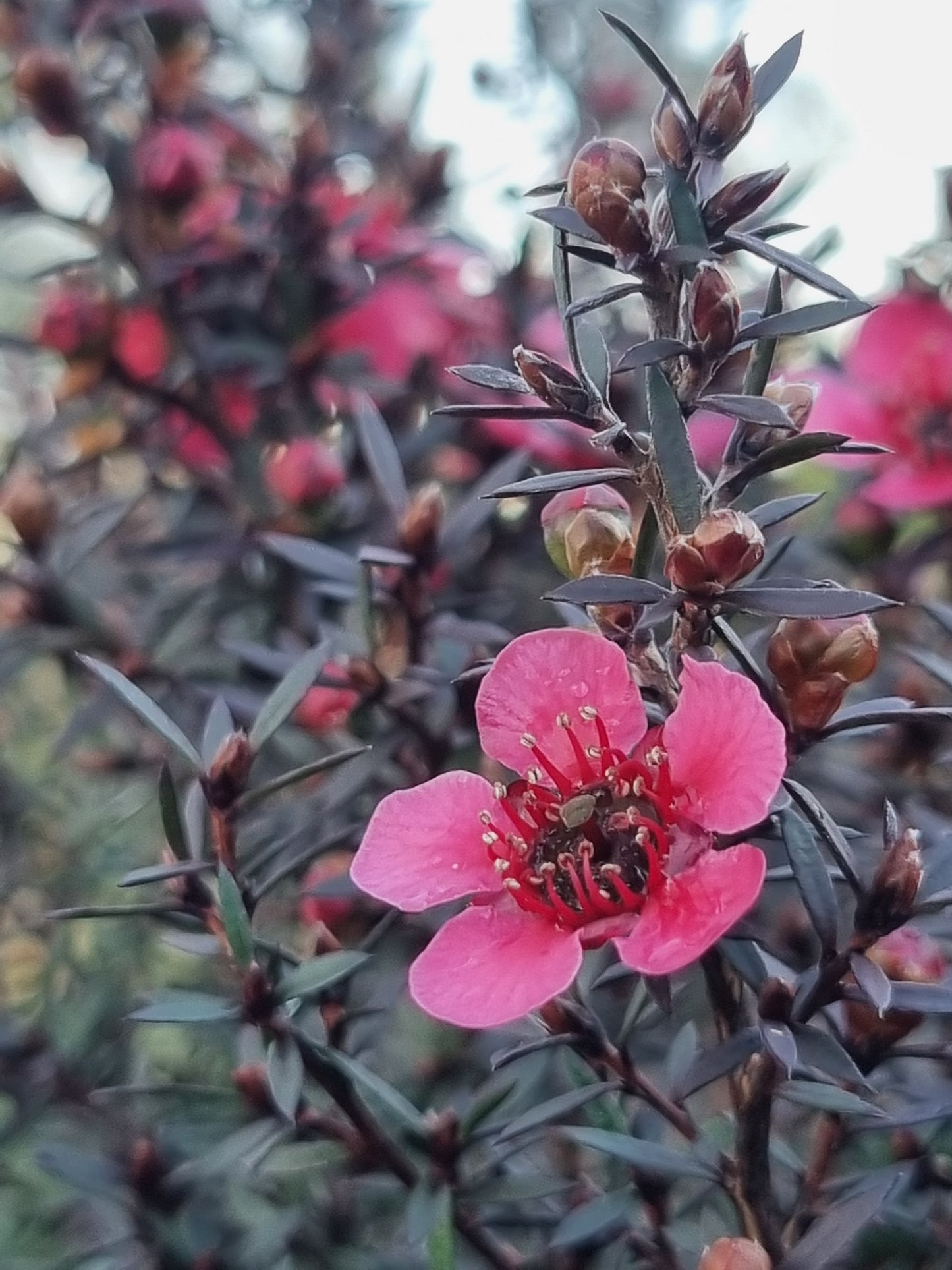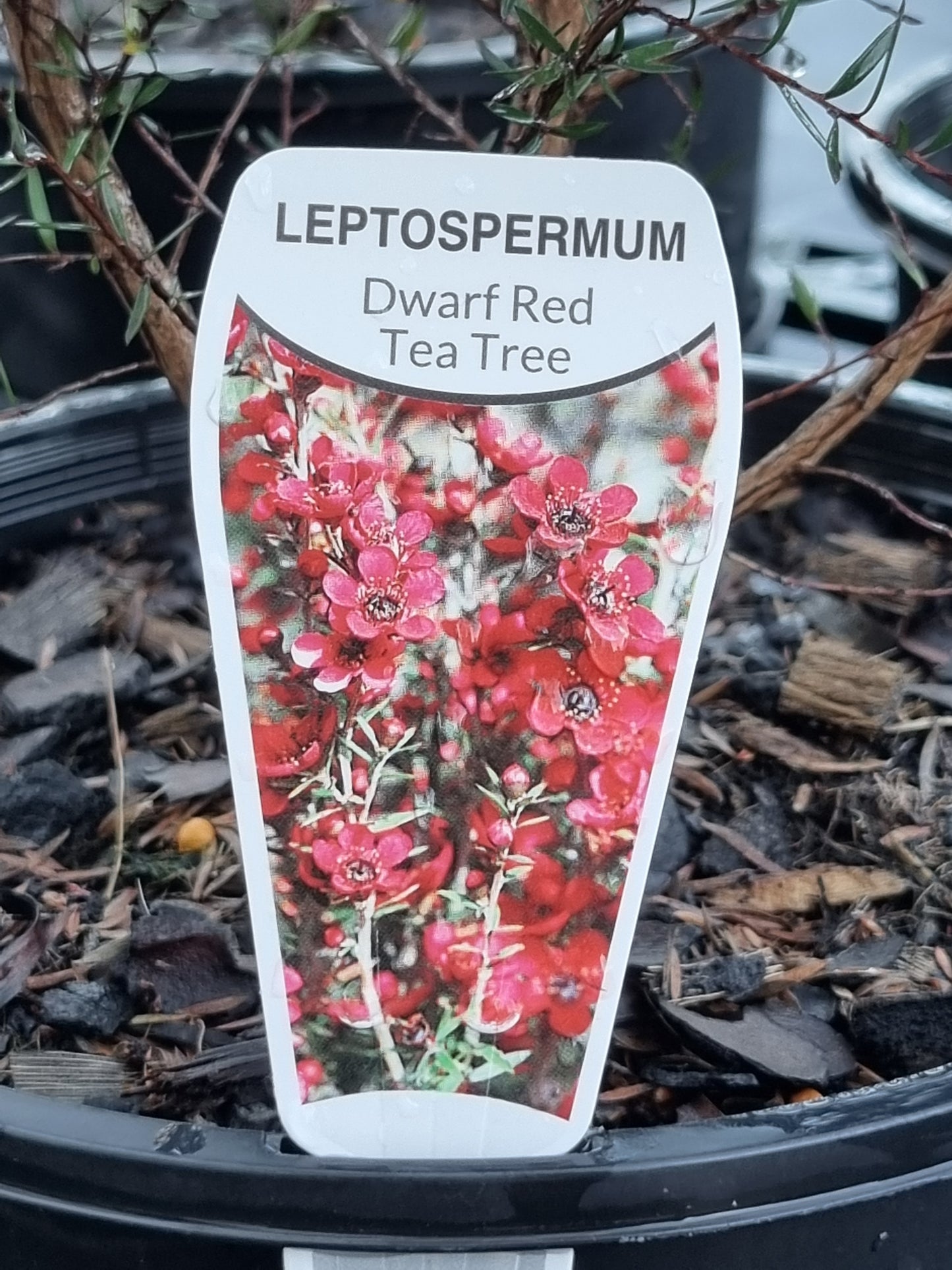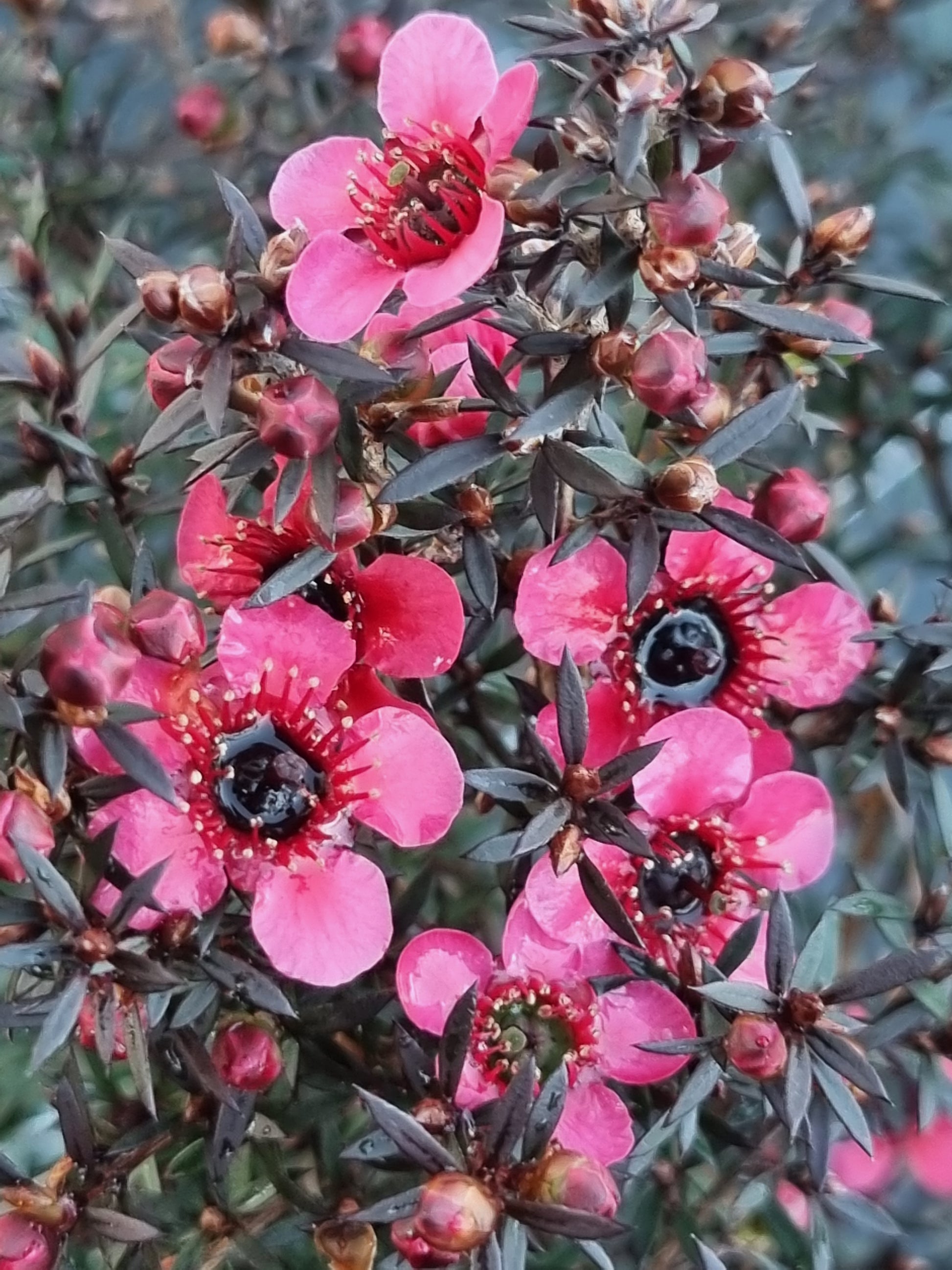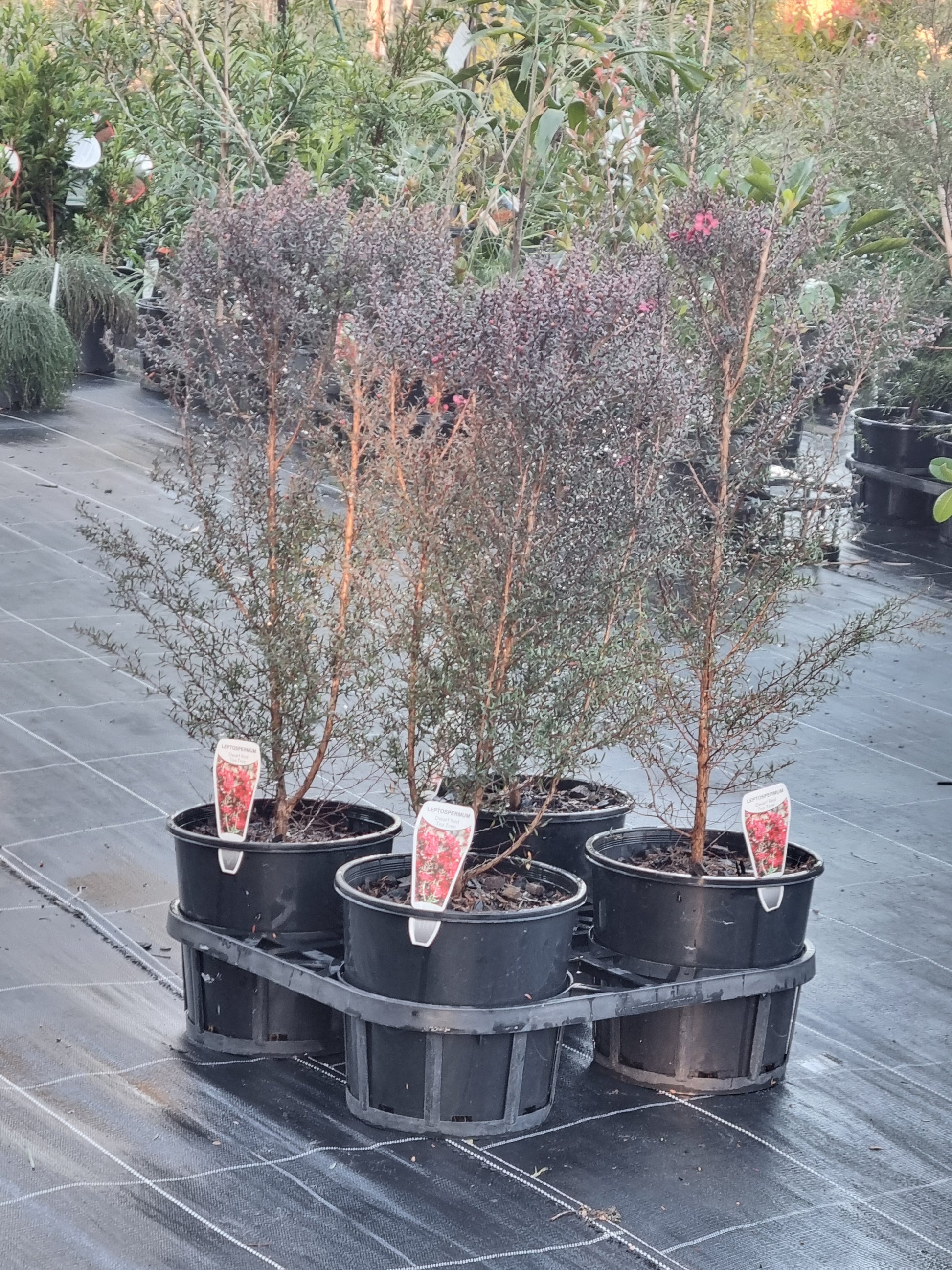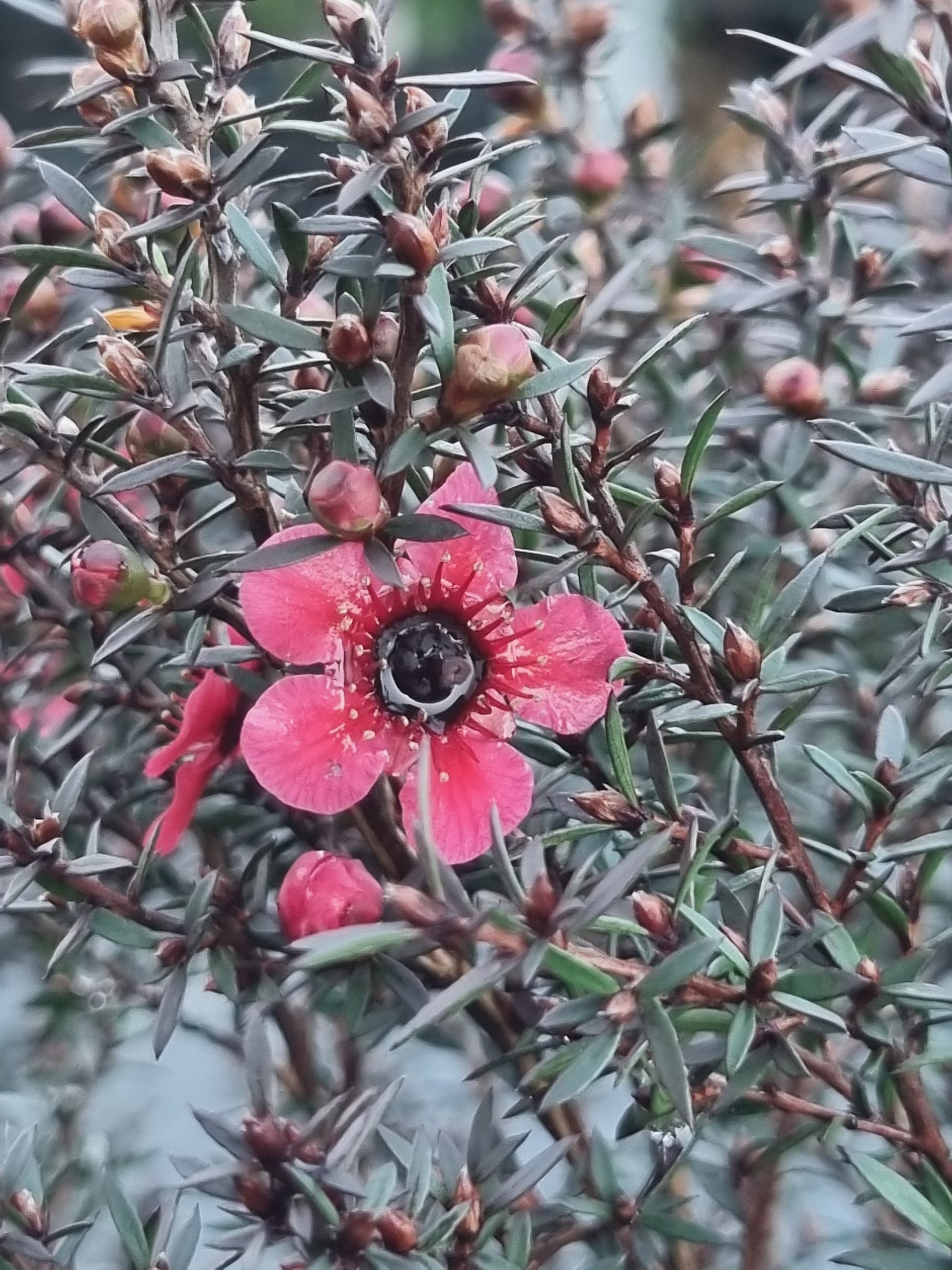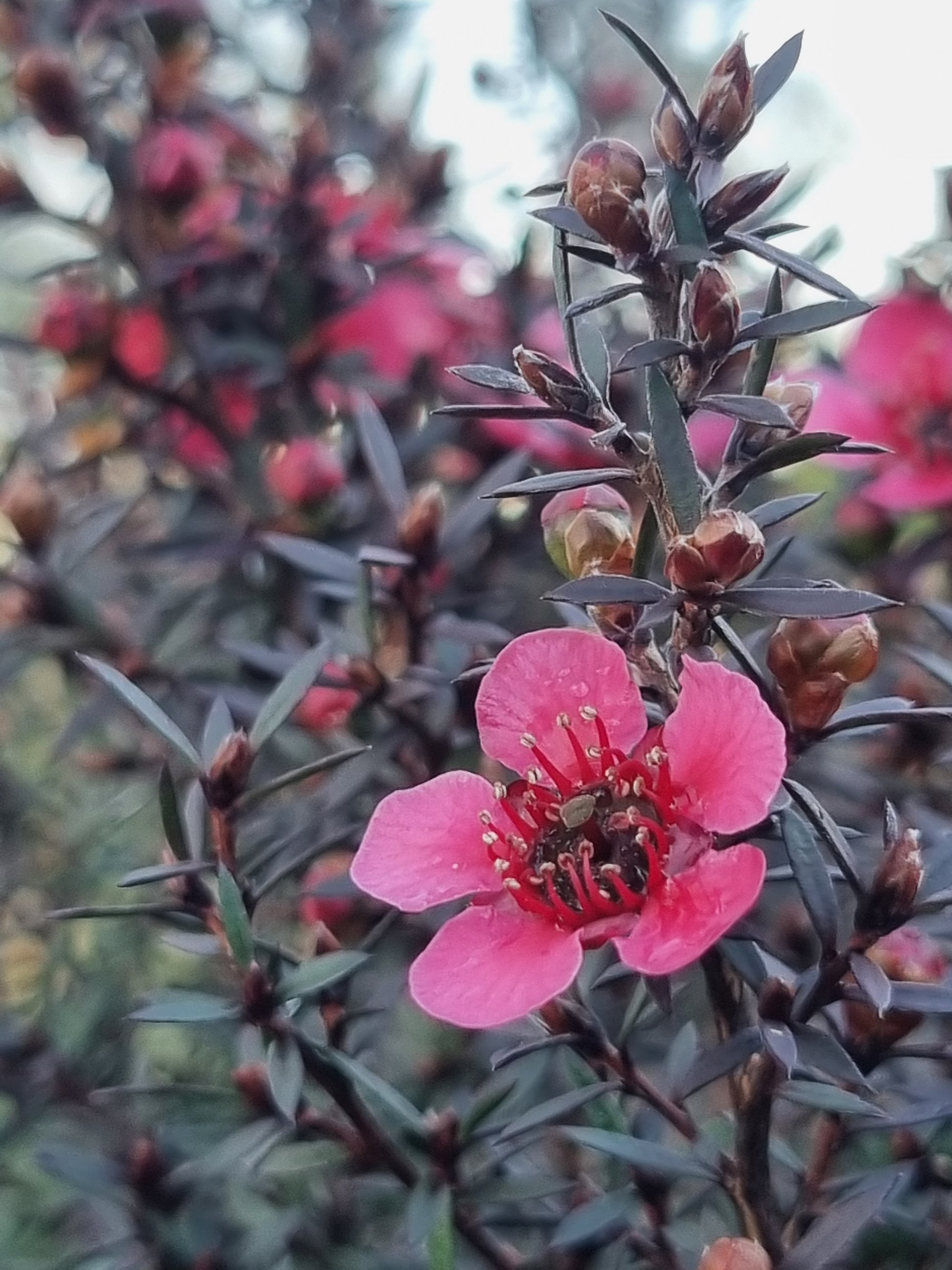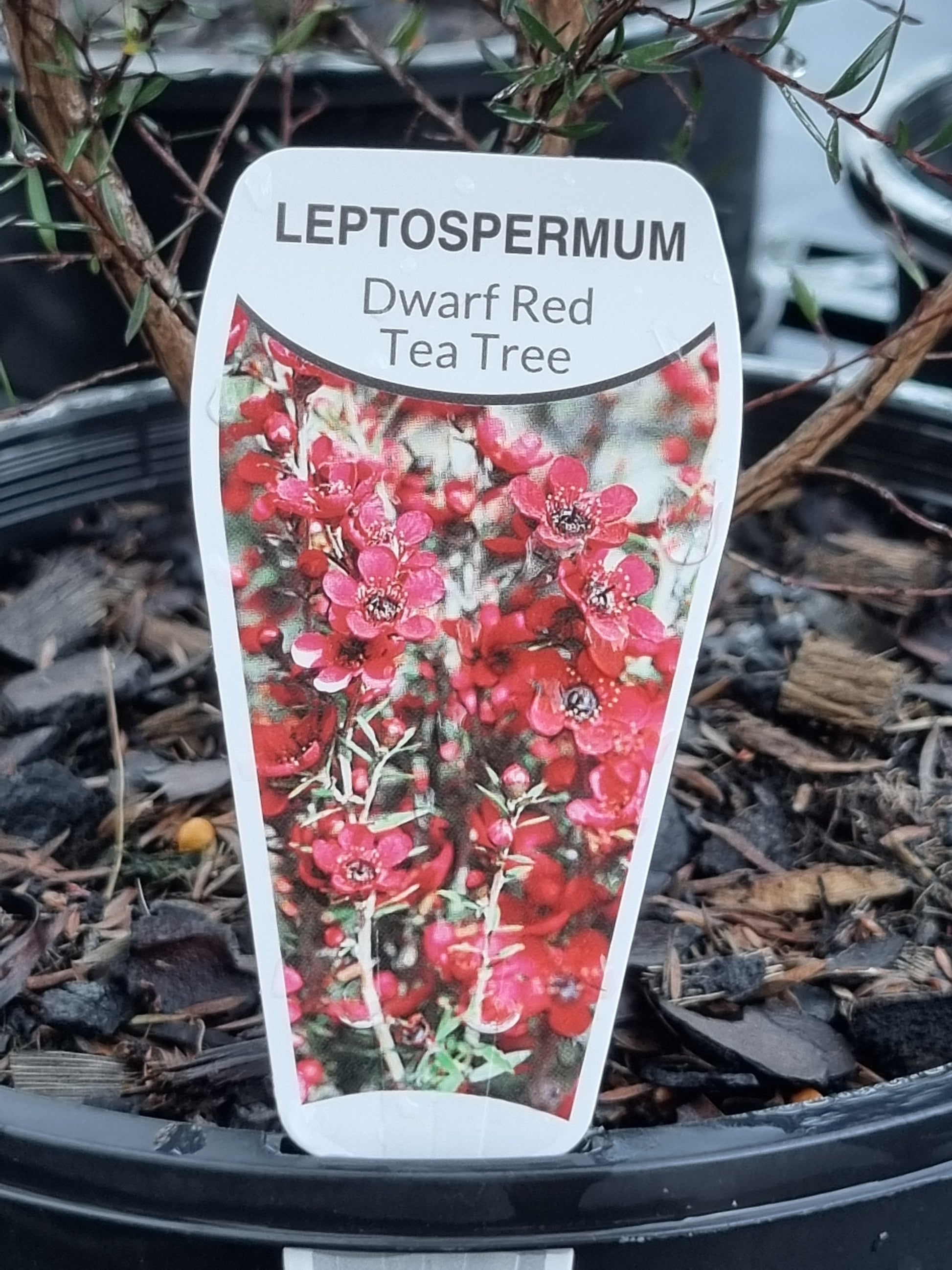Delivertree
Dwarf Tea Tree – Leptospermum scoparium ‘Nanum Rubrum’
Dwarf Tea Tree – Leptospermum scoparium ‘Nanum Rubrum’
Couldn't load pickup availability
‘Nanum Rubrum’ is a dwarf tea tree noted for its dense burgundy foliage and masses of vibrant red-pink blossoms in late winter and spring. Reaching only about 1 m tall and wide, this low-maintenance shrub adds year-round colour to native gardens, pots, and low hedges while providing nectar for bees and other pollinators.
Quick Overview:
- Common Name: Dwarf Tea Tree
- Botanical Name: Leptospermum scoparium ‘Nanum Rubrum’
- Origin: Nursery selection of New Zealand/Australian manuka
- Height & Width: 0.8–1 m high × 0.8–1 m wide; naturally rounded
- Foliage: Fine, deep burgundy-purple leaves turning greenish in shade
- Flowers: Profuse hot-pink to crimson blooms from late winter through spring
- Position: Full sun to part shade
- Soil: Prefers well-drained soil; tolerates clay or seasonally wet sites once established
- Tolerance: Light frost, coastal wind, and short dry spells
- Maintenance: Very low; annual light trim encourages density
- Etymology: Leptospermum = Greek “leptos” (thin) + “sperma” (seed); ‘Nanum Rubrum’ = Latin for “dwarf red”
Detailed Description:
This dwarf form of manuka forms a tight, rounded mound clothed in glossy, needle-fine foliage that begins deep burgundy and maintains rich purple tones through cooler months. In late winter the entire shrub erupts in a carpet of small, five-petalled flowers ranging from cherry pink to crimson red. The waxy blooms attract bees, butterflies, and other beneficial insects when few other plants are flowering, adding both colour and ecological value to winter gardens.
‘Nanum Rubrum’ is ideal for foreground planting, edging native beds, or massed in rockeries where year-round foliage colour provides contrast against greens and silvers. Its compact size suits courtyard pots or balcony planters, and with light post-flowering pruning it can form a neat low hedge along paths or driveways. Adaptable to most well-drained soils, it tolerates heavy clay when established and copes with salty coastal winds. Once rooted, the shrub is surprisingly drought-resilient yet benefits from occasional deep watering in extended dry periods.
Growth and Maintenance:
- Watering: Keep evenly moist the first 6–9 months; thereafter water deeply during prolonged dry spells
- Fertilising: Feed in spring with a slow-release native fertiliser for best foliage colour and flowering
- Mulching: Maintain a 5 cm cushion of organic mulch to moderate soil temperature and suppress weeds
Pruning:
- After Flowering: Lightly clip tips or shear the whole plant by 10–15 % to keep a dense outline and promote new red foliage
- Hedging: Space plants 40–50 cm apart for a low border and trim the tips one or two times per year
- Rejuvenation: Every 3–4 years remove up to one-third of old wood to refresh growth
Common Uses:
- Low formal or informal hedges and path edging
- Rockery or foreground colour accent in native gardens
- Container specimen for patios and courtyards
- Winter colour in mixed shrub borders
- Cut stems for small floral arrangements
Planting Benefits:
- Year-Round Colour: Burgundy foliage and vivid seasonal flowers add constant interest
- Pollinator Friendly: Early blooms supply nectar for bees and butterflies
- Compact Habit: Perfect for tight spaces without excessive pruning
- Hardy Performer: Handles frost, coastal exposure, and variable soils once established
Share
